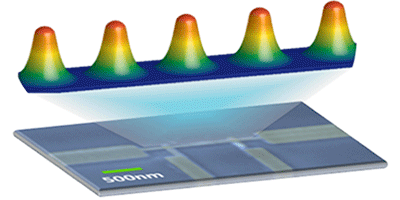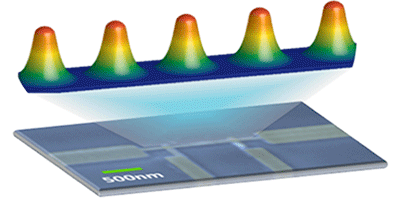Vortices Queue Up in a Nanowire
In the 1990s, physicists studying nanoscopic semiconductors found the material’s resistance oscillated up and down with increasing voltage. The oscillations occur because electrons repel each other, and in a sufficiently small device, this repulsion is big enough that the entry of each additional electron onto the device measurably affects its resistance, an effect known as Coulomb blockade. Researchers led by Nina Marković at Johns Hopkins University, Maryland, have now measured a similar repulsive effect between the tiny quanta of magnetic flux (vortices) that become trapped in superconductors in an external field. The observation of the effect, known as Weber blockade, could inspire devices that use vortices, instead of charge, to carry information.
Vortices are defects in a superconductor that form when the material can no longer fully expel the flux from an external magnetic field. Although they are electrically neutral, vortices, like charges, can repel each other. And in nanoscopic wires with a certain geometry, the energy to add a single vortex becomes sizable. Though hints of this Weber blockade effect have been seen experimentally, they weren’t conclusive.
The superconducting wires Marković and her colleagues studied were flat strips of aluminum, less than a 100 nanometers wide and several micrometers long. Superconductors become resistive when the current passed through them exceeds a “critical” value. Marković and her colleagues found that this critical current rose up and down, like regularly spaced mountain peaks, every time they raised an external magnetic field by roughly 50 gauss. These current oscillations are consistent with what’s expected for the entry and exit of a single vortex. The scheme can thus precisely control the number of vortices in the wires, a feature that could be used to build logical devices.
This research is published in Physical Review Letters.
–Jessica Thomas





